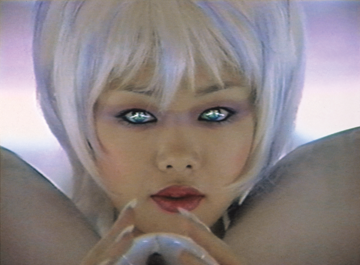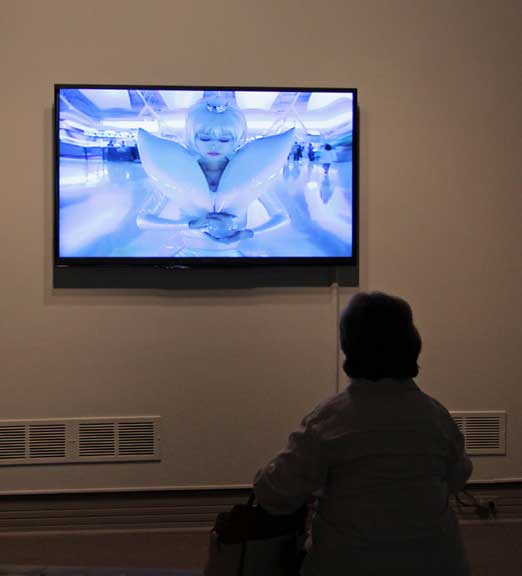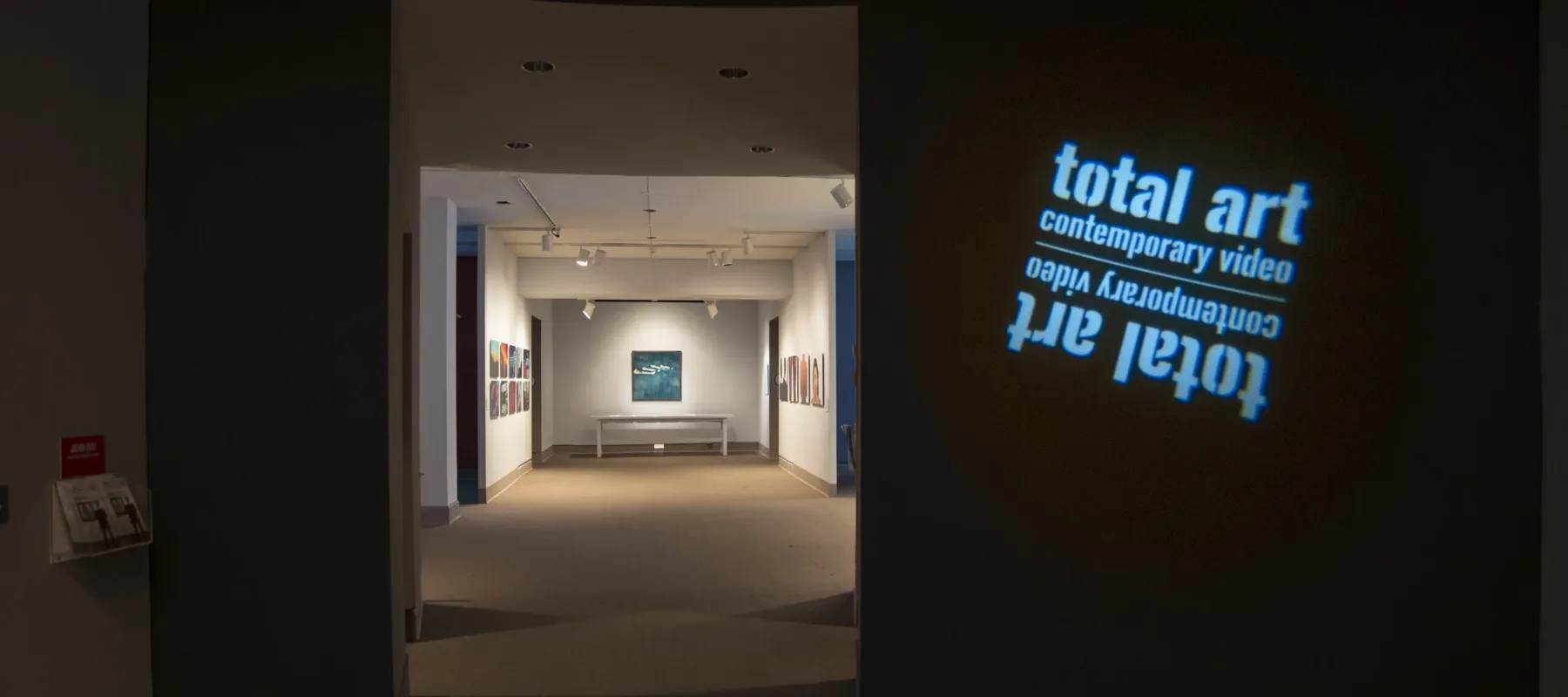“The world is melting; the world is melting, becoming one . . .”
This Zen-apocalyptic chant is a translation of the Japanese lyrics artist Mariko Mori (b. 1967, Tokyo) sings on a hypnotic loop in Miko no Inori (The Shaman-Girl’s Prayer) (1996), currently on view at NMWA in Total Art: Contemporary Video. Dressed in a sleek, futuristic white dress, wearing mirrored contact lenses and a wispy white wig, all crowned by a reflective moon-shaped tiara, Mori sits in Osaka’s impressively modern Kansai International Airport rolling a clear glass orb between her manicured hands. Perhaps using the capsule to channel energy and knowledge from the past, perhaps meditating on events of the future, the artist envisions herself as an intermediary between visible (present) and invisible (past/future) worlds.

Beginning her career as a high-fashion model in Japan in the 1980s, Mori quickly transitioned to the New York art world in the ’90s, producing large-scale Cindy Sherman-esque photos of herself as various imagined characters. Wearing skimpy anime- and sci-fi-inspired costumes while interacting with the Japanese public on the subway or in business districts, Mori exaggerated the limiting, stereotypical roles available to Japanese women, while also acknowledging the growing creative role of technology.
Interested in portraying the tensions and connections between the old and new worlds of Japanese culture, Mori often integrates spiritual, otherworldly motifs with advanced technological techniques and modern aesthetics. The artist’s elaborate designs often require collaboration. For Miko no Inori, Mori enlisted the help of a videographer, two choreographers, a make-up artist, a stylist, and a composer (her husband) to establish her calming but eerie presence.
Mori also incorporates the Japanese public and their environment. Travelers can be seen in the background of the video continuously passing by Mori, perhaps unaware of the artist’s presence amid the airport’s shiny, reflective surfaces. The overwhelming visual motifs of bright whites, illuminating background lighting, and mirror images created with the glass ball and Mori’s tiara augment the video’s meditative, transfixing aesthetic.

The choreographed movements of the orb combined with Mori’s all-white ensemble may reference the post-WWII Japanese tradition of butoh, an avant-garde style of dance performed in white body makeup with slow, hyper-controlled movements motivated by the unconscious. Wearing the color white in Eastern cultures can also refer to death and mourning. Connecting back to the video’s lyrics, Mori’s attire might suggest that she remains respectfully attentive to the overwhelmingly streamlined present and a potentially dystopian future.
The flow of Mori’s gaze also echoes the tai chi-like patterns she completes with the glass sphere in hand, further embodying the overall “one-ness” her song proclaims. Mori’s more recent work in sculpture and installation follows in this prophetic style, and requires continued collaboration from archeologists, scientists, and engineers to create her out-of-this world work.
To learn more about Mariko Mori and Miko no Inori, visit the museum for a short conversation with NMWA Chief Curator Kathryn Wat on Wednesday, September 3, at noon!
